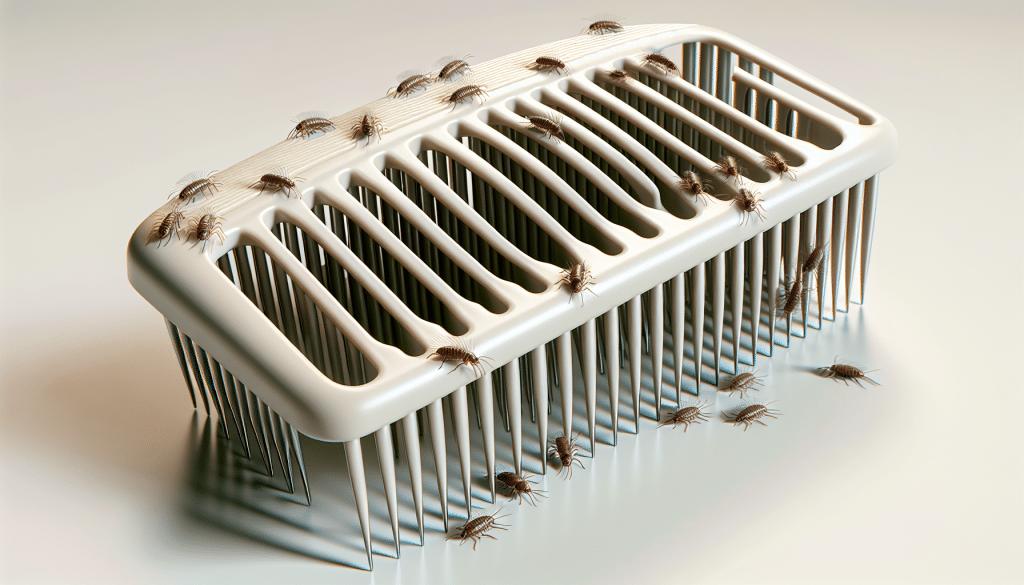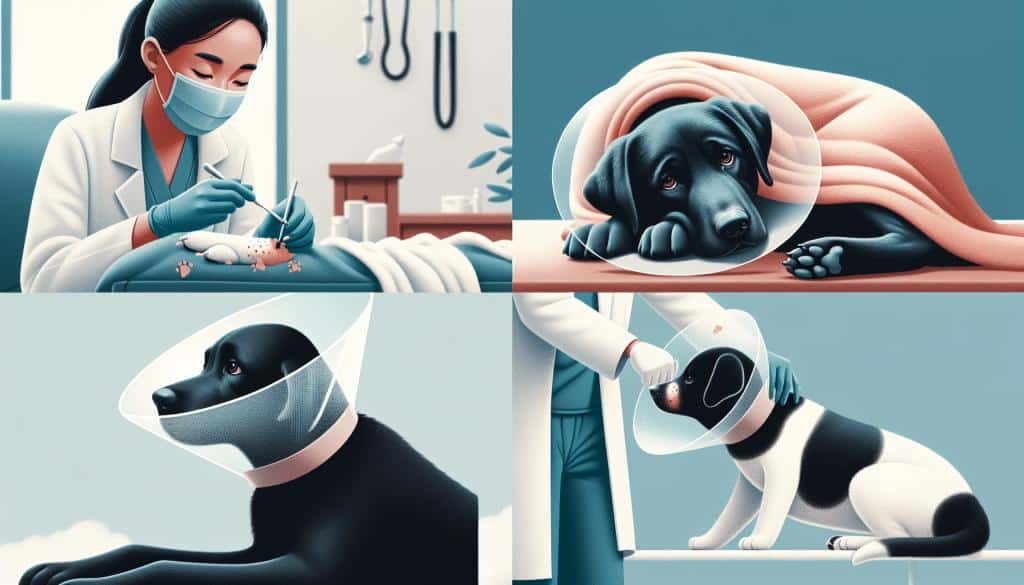So, you’ve noticed that your furry friend has been scratching a lot lately, and you suspect that those pesky little bugs known as fleas might be the culprit. Well, you’ve come to the right place! In this article, we’ll be sharing some tried and true methods to effectively eliminate fleas on your dog. Say goodbye to the itchiness and discomfort, and let’s get your pet back to their happy, flea-free self!

Understanding the Threat of Fleas
Fleas are a common and persistent threat to the health and well-being of dogs. These tiny, wingless insects can cause a range of problems for your furry friend, including intense itching, skin irritations, and even the transmission of diseases. It is crucial to recognize the signs of a flea infestation, understand the life cycle of fleas, and grasp the importance of eliminating them to ensure your dog’s health remains intact.
Recognizing the Signs of a Flea Infestation
Detecting a flea infestation on your dog can be challenging, especially since adult fleas are incredibly small and mobile. However, there are some telltale signs you can look out for. Excessive scratching, biting, and licking, especially around the tail and hindquarters, can indicate the presence of fleas. You may also notice tiny black specks, known as flea dirt, on your dog’s fur or bedding. If you part your dog’s fur and see tiny brown insects jumping or moving rapidly, it is a clear sign of a flea infestation.
Understanding the Life Cycle of Fleas
To effectively eliminate fleas, it is essential to understand their lifecycle. Fleas undergo four stages: egg, larva, pupa, and adult. Adult fleas feed on your dog’s blood, mate, and lay eggs, which eventually fall off into the environment. The eggs hatch into larvae, which then spin cocoons and develop into pupae. The pupae can remain dormant for several weeks or even months before emerging as adult fleas. This lifecycle highlights the importance of addressing not only the adult fleas on your dog but also the eggs and larvae present in your surroundings.
Explaining the Importance of Eliminating Fleas for Dog’s Health
Eliminating fleas is not just about relieving your dog’s discomfort and preventing them from scratching excessively. Fleas can transmit various diseases, such as tapeworm and Bartonella, to your dog. In severe cases, fleas can cause anemia, especially in young or ill dogs, due to the blood loss from constant feeding. Additionally, flea bites can lead to allergic reactions, causing intense itching, skin redness, and inflammation. By actively eliminating fleas, you are safeguarding your dog’s overall health and well-being.
Methods to Eliminate Fleas
Fortunately, there are numerous methods available to eliminate fleas and keep them at bay. Each method has its advantages and considerations, and it is crucial to choose the appropriate one for your dog’s specific needs. Some of the most common methods include using oral medication, applying topical treatments, administering injections, employing flea collars, and utilizing flea shampoos and sprays.
Using Oral Medication
Oral medications for flea control are available in the form of tablets, chewables, or flavored treats. These medications contain active ingredients that target fleas and disrupt their life cycle. They are administered orally and work by killing adult fleas or inhibiting their ability to reproduce. It is crucial to determine the suitable dosage based on your dog’s weight and follow the recommended treatment schedule. Common brands of oral flea medications include Comfortis, NexGard, and Bravecto. While generally safe, some dogs may experience mild side effects such as vomiting or diarrhea.
Applying Topical Treatments
Topical treatments for fleas involve applying a liquid solution directly to your dog’s skin, typically between the shoulder blades or along the back. These treatments contain insecticides that kill adult fleas and often provide protection against other parasites like ticks and mosquitoes. Popular brands of topical flea treatments include Frontline, Advantage, and Revolution. It is essential to choose the appropriate product depending on your dog’s size and weight and follow the instructions for application carefully. Potential side effects can include skin irritation, hair loss, or mild numbness around the application site.
Administering Injections
Flea injections, also known as injectable flea preventives, are administered by a veterinarian. These injections contain a long-lasting medication that provides continuous protection against fleas for several months. The medication is typically slowly released into the dog’s bloodstream, effectively killing and repelling fleas. It is necessary to understand how the injection works, the timeline for its effectiveness, and the potential side effects, which can include temporary local swelling or stiffness.
Employing Flea Collars
Flea collars are worn around the dog’s neck and release active ingredients that repel and kill fleas. These collars are designed to provide long-term protection against fleas and can be particularly useful for dogs who spend a lot of time outdoors. When using a flea collar, it is essential to choose the correct size for your dog and follow the installation instructions carefully. Flea collars usually offer several months of protection before needing replacement. Regular maintenance, such as adjusting the collar’s fit and ensuring it remains dry, is vital to maximize its effectiveness. Precautions should be taken to prevent accidental ingestion of the collar by the dog or other household pets.
Utilizing Flea Shampoos and Sprays
Flea shampoos and sprays are another option for eliminating fleas on your dog. These products contain insecticidal ingredients that effectively kill adult fleas on contact. When using flea shampoos, it is essential to thoroughly lather your dog’s coat and leave the shampoo on for the recommended duration before rinsing it off. Flea sprays can be applied to your dog’s fur, bedding, and other areas where fleas may be present. While flea shampoos and sprays can offer immediate relief, their effects may be temporary, and additional preventive measures may be necessary. It is important to choose products specifically designed for dogs, as using products intended for other animals can be harmful.

Understanding Oral Medication for Fleas
Oral medication is a popular method for flea control due to its convenience and effectiveness. However, it is essential to have a good understanding of how to use these medications properly to ensure optimal results.
Determining Suitable Dosages
When using oral flea medications, it is crucial to determine the appropriate dosage based on your dog’s weight. Different medications have specific weight ranges for dosage, and exceeding or undershooting the recommended dose can affect the medication’s effectiveness and potentially harm your dog. Consult with your veterinarian to accurately determine the correct dosage for your dog and follow their guidance closely.
Discussing Common Brands
There are several trusted and widely used brands of oral flea medications available on the market. Some popular brands include Comfortis, NexGard, Bravecto, and Trifexis. Each of these medications has its unique features, such as the duration of efficacy and additional protection against other parasites like ticks and heartworms. Consulting with your veterinarian can help you choose the most suitable brand based on your dog’s specific needs and your preferences.
Detailing Potential Side Effects
While oral flea medications are generally safe, there is a possibility of side effects, although they are usually mild and temporary. Some dogs may experience gastrointestinal upset, such as vomiting or diarrhea, after taking the medication. In rare cases, more severe reactions may occur, such as allergic reactions or neurological symptoms. If you notice any unusual symptoms or behaviors in your dog after administering oral flea medication, it is essential to contact your veterinarian immediately for further guidance and assistance.
Topical Treatments for Fleas
Topical treatments provide an effective and convenient way to eliminate fleas from your dog. Understanding how to apply these treatments correctly and being familiar with common brands and potential side effects is crucial for successful flea control.
How to Apply Topical Treatments
When applying topical flea treatments, it is important to follow the instructions provided by the manufacturer carefully. Typically, the treatment is applied directly to your dog’s skin, usually between the shoulder blades or along the back. Part the fur to expose the skin and apply the liquid directly, making sure to distribute it evenly. Avoid bathing your dog for a certain period before or after application, as this can affect the treatment’s efficacy. Furthermore, ensure the product is suitable for your dog’s age, size, and breed, as different formulations may be available.
Discussing Common Brands
Several reputable brands offer effective topical treatments for flea control. These include Frontline, Advantage, K9 Advantix, and Revolution. Each brand has specific features and active ingredients, with varying durations of effectiveness. Consulting with your veterinarian can help determine the most suitable product based on your dog’s needs and any additional parasite protection required.
Detailing Potential Side Effects
While topical flea treatments are generally safe for dogs, some dogs may experience mild side effects. These can include temporary skin irritation, such as redness or itching, at the application site. In rare cases, more severe reactions can occur, such as hair loss or numbness around the treated area. It is important to monitor your dog after applying the treatment and contact your veterinarian if you notice any concerning symptoms. They can provide guidance on whether to continue using the treatment or switch to an alternative method.

How Flea Injections Work
Flea injections offer a unique approach to flea control, providing long-lasting protection without the need for frequent applications. Understanding how flea injections work, their timeline for effectiveness, and potential side effects is essential for making an informed decision.
Understanding How the Injection Eliminates Fleas
Flea injections contain a medication that is injected under the dog’s skin. The medication is slowly released into the bloodstream, providing continuous protection against fleas for several months. The active ingredients in the injection interfere with the flea’s nervous system, ultimately leading to their elimination. These injections are typically administered by a veterinarian, ensuring proper dosage and accurate placement of the medication.
Timeline for Effectiveness
Flea injections usually start working within a few hours to a day after administration, killing adult fleas on contact and preventing their reproduction. The medication’s effectiveness can last several months, depending on the specific product used. It is important to follow the recommended injection schedule to ensure continuous protection for your dog.
Detailed Potential Side Effects
While flea injections are generally considered safe, they may come with some potential side effects. Most dogs experience little to no side effects. However, some may exhibit temporary local swelling or stiffness at the injection site. In rare cases, allergic reactions may occur, resulting in symptoms such as difficulty breathing, facial swelling, or hives. If you notice any concerning signs after your dog receives a flea injection, contact your veterinarian immediately for further evaluation and guidance.
Effective Use of Flea Collars
Flea collars can be a convenient and effective method of flea control for your dog. To ensure their optimal use and effectiveness, it is essential to choose the right size, follow the installation process, understand the expected duration of effectiveness, and adhere to maintenance tips and precautions.
Choose the Right Size
Flea collars come in different sizes to accommodate dogs of various breeds and sizes. It is crucial to choose the correct size for your dog, as a collar that is too loose may not provide adequate control, while a collar that is too tight can cause discomfort and potentially harm your dog. Carefully measure your dog’s neck circumference and select a collar that fits snugly but allows for some room to move and breathe comfortably.
Installation Process
Proper installation of the flea collar is crucial to ensure its effectiveness. Follow the manufacturer’s instructions carefully, as the installation process may vary depending on the specific brand. In most cases, you will need to adjust the collar to fit your dog’s neck, ensuring it is not too tight or too loose. Trim any excess length to prevent the collar from becoming a hazard.
Expected Duration of Effectiveness
Flea collars typically offer several months of protection against fleas. Depending on the specific brand and formulation, the collar may provide continuous control anywhere from three months to eight months. Be aware of the collar’s expiry date and replace it promptly to maintain optimal flea control. It is essential to note that flea collars primarily target adult fleas and may not address other stages of the flea life cycle.
Maintenance Tips and Important Precautions
Regular maintenance is essential to ensure the flea collar remains effective. Inspect the collar regularly for signs of wear or damage, as a compromised collar may lose its effectiveness. Keep in mind that flea collars may not be suitable for all dogs, especially those with sensitive skin or known allergies. If your dog exhibits any adverse reactions, such as skin irritation or discomfort, discontinue the use of the collar and consult with your veterinarian for alternative flea control options.
Washing off Fleas with Shampoos and Sprays
Flea shampoos and sprays can provide immediate relief for dogs suffering from flea infestations. Understanding effective washing techniques, knowing common brands, and being aware of potential side effects is crucial when utilizing these products.
Guide to Effective Washing Techniques
When using flea shampoos, it is essential to follow the manufacturer’s instructions for proper use. Thoroughly wet your dog’s coat and apply the shampoo, making sure to work it into a rich lather. Focus on areas where fleas are commonly found, such as the neck, back, and tail. Leave the shampoo on for the recommended period to allow the active ingredients to take effect, and then rinse thoroughly. Repeat the process, if necessary, as directed by the manufacturer. Dry your dog using a towel or a low heat setting on a pet-friendly blow dryer.
Discussing Common Brands
Several reputable brands offer flea shampoos and sprays that effectively eliminate fleas and provide immediate relief. Some popular brands include Adams, Sentry, Vet’s Best, and Hartz. Each brand may have different formulations and active ingredients, so it is essential to choose one specifically designed for dogs. Consulting with your veterinarian can help you select the most suitable brand based on your dog’s needs and any specific considerations.
Detailing Potential Side Effects
While flea shampoos and sprays are generally safe to use, it is important to be aware of potential side effects. Some dogs may experience mild skin irritation or dryness after using these products. In rare cases, more severe reactions can occur, such as allergic reactions or respiratory distress. If you notice any concerning symptoms after using flea shampoos or sprays, discontinue their use and consult with your veterinarian for further evaluation and guidance.
Natural Remedies for Fleas
In addition to conventional methods, natural remedies can offer an alternative approach to flea control. These remedies are often favored by pet owners who prefer more holistic or chemical-free options. Understanding the benefits of natural remedies, utilizing essential oils cautiously, and creating homemade sprays are important considerations when exploring these options.
Benefit of Natural Remedies
Natural remedies for flea control can provide a more environmentally friendly alternative to conventional methods. They often use plant-based ingredients that contain repellent or insecticidal properties. While natural remedies may not provide the same level of effectiveness as some chemical treatments, they can still be beneficial in mild infestations or as a preventive measure. Additionally, natural remedies may be a suitable option for dogs with existing health conditions or sensitivities.
Usage of Essential Oils
Essential oils are often utilized in natural flea control due to their insect-repellent properties. However, it is crucial to use essential oils cautiously and with expert guidance, as some oils can be toxic to dogs. The concentration and dilution ratio are essential factors to consider when using essential oils. Oils such as lavender, cedarwood, and lemongrass are commonly recommended as natural flea repellents. It is important to consult with a veterinarian or a knowledgeable professional before using essential oils on your dog to avoid potential harm or adverse reactions.
Creating Homemade Sprays
Homemade sprays can be an effective and cost-efficient alternative to commercial flea sprays. These sprays often use natural ingredients such as vinegar or lemon juice, which can have repellent properties against fleas. To create a homemade spray, combine the chosen ingredients with water in a spray bottle and thoroughly spray your dog’s coat, bedding, and other areas where fleas may be present. It is important to note that homemade sprays may not provide the same level of efficacy and duration as commercial products. Additionally, it is crucial to monitor your dog for any adverse reactions and discontinue use if any skin irritation or discomfort occurs.
Preventing Fleas from Re-infesting Your Dog
Eliminating fleas from your dog is only half the battle. To prevent re-infestation and maintain a flea-free environment, it is essential to take preventive measures and stay vigilant.
Keeping the Environment Clean
Fleas can thrive in the environment, making it crucial to keep your home and outdoor areas clean and free from potential flea havens. Regularly vacuuming carpets, rugs, and upholstery can help remove flea eggs and larvae, while washing bedding in hot water can eliminate any existing fleas. Pay attention to areas where your dog spends a lot of time, such as their favorite resting spots or outdoor areas where they play. Maintaining cleanliness and hygiene can significantly reduce the chance of re-infestation.
Regular Grooming
Regular grooming is an effective way to detect and prevent fleas on your dog. Brushing your dog’s coat thoroughly with a flea comb can help remove adult fleas and flea dirt, providing immediate relief and preventing them from reproducing. Additionally, bathing your dog regularly using a mild shampoo can help eliminate fleas and keep their coat clean and healthy. Regular grooming sessions also allow you to observe any signs of flea infestation or skin irritations, enabling you to take prompt preventive measures.
Checking for Fleas Regularly
Flea prevention is an ongoing process, and regular checks for fleas are essential to catch any infestations early on. Inspect your dog’s coat regularly, paying special attention to areas where fleas are commonly found, such as the neck, back, and tail. Look for signs of adult fleas, flea dirt, or any unusual scratching or biting behavior. Early detection allows for prompt flea treatment, preventing the infestation from worsening and reducing the risk of spreading to other pets or your home.
Consulting with a Professional
While various methods can be effective in eliminating fleas, consulting with a professional, such as your veterinarian, can provide invaluable guidance and assistance in managing flea control for your dog.
Importance of Veterinarian Consultation
Seeking guidance from a veterinarian is crucial to ensure the most appropriate flea control plan for your dog’s specific needs. A veterinarian can evaluate your dog’s health, age, and overall condition to determine the most effective and safe treatment options. They can also offer recommendations on preventive measures and address any concerns or questions you may have. Professional guidance can help you navigate the vast array of flea control products and ensure you make informed decisions regarding your dog’s well-being.
Explaining the Diagnostic Process
If you suspect a flea infestation or require assistance in managing existing fleas, your veterinarian can perform a thorough examination of your dog. They will look for signs of fleas, such as adult fleas, flea dirt, or signs of skin irritation. In some cases, they may recommend additional tests, such as a skin scraping or blood test, to rule out any underlying conditions or allergies. The diagnostic process helps determine the severity of the infestation and guides the veterinarian in developing an appropriate flea control plan.
Discussing Professional Treatment Options
In certain cases, professional treatment options may be necessary to effectively eliminate fleas from your dog. Your veterinarian can provide a range of treatment options, such as stronger medications, topical treatments, or additional preventive measures. They can also guide you on how to integrate professional treatments with your existing flea control routine. Professional treatment options are particularly beneficial in severe infestations or situations where conventional methods have not yielded satisfactory results.
In conclusion, understanding the threat of fleas, recognizing the signs of infestations, and comprehending the life cycle of these pests is vital for effective flea control. Choosing the appropriate method to eliminate fleas, such as oral medication, topical treatments, injections, flea collars, or shampoos/sprays, depends on your dog’s specific needs and preferences. It is important to use these methods correctly, understand potential side effects, and regularly consult with a professional for expert guidance. By actively preventing and eliminating fleas, you can ensure your dog’s health and well-being remain uncompromised.



